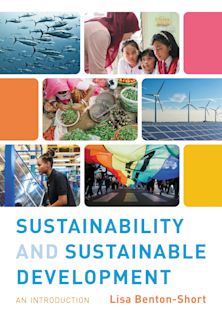Green Savings
How Policies and Markets Drive Energy Efficiency
Green Savings
How Policies and Markets Drive Energy Efficiency
This product is usually dispatched within 10-14 days
- Delivery and returns info
-
Free UK delivery on orders £30 or over
Description
This landmark work lauds the benefits of decreased energy consumption, investigating its relationship to public policy and analyzing its potential billion-dollar benefits to the U.S. economy.
U.S. consumers tend to use energy indiscriminately—something they may no longer be able to do with impunity. This game-changing book asserts that reducing energy consumption should be a frontline strategy to address global climate change, threats to energy security, and the challenge of grid reliability. The book supports two bold arguments: that policies motivating greater investment in high energy efficiency should be a priority, and that energy efficiency can help the nation in times of crisis.
To make their case for the necessity of prioritizing demand reduction, the authors examine the policies and markets operating in a number of leading cities, states, and nations across the globe to uncover the keys to their success. These examples show how demand-side strategies can significantly reduce pollution, cut costs, and make the electric grid more resilient. The authors explain why these technologies are not widely adopted and assess the potential savings they can produce. The book will be an eye-opener for policymakers, energy professionals, and the public as it demonstrates how cost-effective demand reduction policies can improve air quality, strengthen electricity markets, and generate jobs.
Table of Contents
Series Foreword
Acknowledgments
Chapter 1 Introduction
1.1 The Multiple Motivations for Energy Efficiency
1.2 The Value of Cross-Disciplinarity
1.3 The Energy-Efficiency Gap
1.4 The Focus on Electricity Consumption by "End-Users"
1.5 The Value of Polycentric Systems of Policies
1.6 International Trends, Challenges, and Opportunities
1.7 Questions and Challenges Addressed by This Book
1.8 Organization of This Book
Chapter 2 Energy-Efficient Technologies and Practices: Today's Portfolio and Tomorrow's Promise
2.1 How Energy and Electricity Are Currently Used
2.2 Technologies and Practices for Energy-Efficient Buildings
2.3 Technologies and Practices for Energy-Efficient Industry
2.4 Matching Load to Generation
2.5 Estimating the Levelized Cost of Electricity Generation and Savings
2.6 Energy Efficiency and Carbon Mitigation Supply Curves
2.7 Conclusions
Chapter 3 Obstacles to Energy Efficiency and the Logic of Policy Design
3.1 Market Failures and Public Interest Rationales for Public Policy
3.2 Market Failures and Barriers
3.2.1 Financial Barriers
3.2.2 Regulatory Barriers
3.2.3 Information Barriers and Behavioral "Wrinkles"
3.2.4 Lock-In of Energy Waste
3.3 Non-Energy Benefits, Costs, and Drivers
3.4 The Logic of Energy-Efficiency Policy Design
3.5 Conclusions
Chapter 4 Energy-Efficiency Policies and Programs in a Maturing Marketplace
4.1 A Taxonomy of Policy Instruments
4.2 Policy Levers for Energy-Efficient Buildings
4.2.1 Financing Policies
4.2.2 Regulatory Policies
4.2.3 Information Policies
4.3 Policy Levers for Energy-Efficient Industry
4.3.1 Financing Policies
4.3.2 Regulatory Policies
4.3.3 Information Policies
4.4 Integrating Policy Concepts
4.4.1 Economy-Wide Policy Instruments
4.4.2 Multiple Measures and Policies
4.4.3 Multiple Scales of Governance
4.4.4 Polycentric Governance
4.5 Conclusions
Chapter 5 Program Evaluation and the Need for New Business Models
5.1 Isolating the Efficiency Effect in Energy Intensity Metrics
5.2 Evaluating Energy-Efficiency Programs and Policies
5.3 Measurement and Verification of Impacts
5.4 Controlling for Rival Explanations
5.4.1 Free Ridership
5.4.2 Spillovers
5.4.3 Rebound
5.5 Trade-offs and Alternative Views of Success
5.6 Integrating Energy Efficiency into the Utility Business Model
5.6.1 Integrated Resource Planning
5.6.2 The Virtual Power Plant
5.6.3 Alternative Utility Models for Promoting Energy Efficiency
5.6.4 Third-Party Entities for Delivering Ratepayer-Funded Energy Efficiency
5.7 Conclusions
Chapter 6 Follow the Footprints: Leading and Lagging States
6.1 Federal Effort toward Energy Efficiency
6.1.1 Overview of National Legislation
6.1.2 Multiple Scale U.S. Governance of Energy Efficiency
6.2 State Performance on Energy Efficiency: A Statistical Analysis
6.2.1 Conceptual Framework for the Energy-Efficiency Performance of States
6.2.2 State Policies and Characteristics
6.2.3 Policy Impacts on State Energy-Efficiency Performance
6.3 Lessons from Leading and Improving States
6.3.1 Massachusetts
6.3.2 California
6.3.3 Wisconsin
6.3.4 Arkansas
6.4 Room for Improvement
6.5 Conclusions
Chapter 7 Potential for the Future
7.1 Technical, Economic, and Achievable Potential
7.2 Estimating the Potential with Energy Modeling
7.3 Policy Supply Curve for Energy Efficiency
7.4 Policy Supply Curve for Carbon Abatement
7.5 Comparison of Global Policy Practices
7.5.1 Germany
7.5.2 China
7.5.3 Japan
7.5.4 United Kingdom
7.6 Conclusions
Chapter 8 Policies and Markets: Moving Forward in Unison
8.1 The Skeptics and the Advocates
8.2 Policy Recommendations
8.2.1 Keeping Up with Technology Assets
8.2.2 Following the Leaders
8.2.3 Employing Polycentric Policy Systems
8.2.4 Closing the Energy-Efficiency Gap
8.3 Looking to the Future
Appendix: Correlation Table: All Variables
Notes
References
Index
Product details
| Published | 29 Sep 2015 |
|---|---|
| Format | Hardback |
| Edition | 1st |
| Extent | 304 |
| ISBN | 9781440831201 |
| Imprint | Praeger |
| Dimensions | 235 x 156 mm |
| Series | Energy Resources, Technology, and Policy |
| Publisher | Bloomsbury Publishing |

ONLINE RESOURCES
Bloomsbury Collections
This book is available on Bloomsbury Collections where your library has access.


































